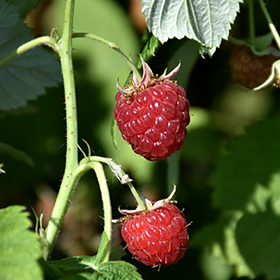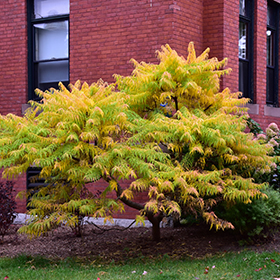Description
Growth & Care
| USDA Plant Hardiness Zone | 4a |
| Growth Rate | Average |
| Recommended Pruning Method | Can Prune At Anytime |
Foliage
| Foliage Type | Deciduous |
| Fall Color | Yellow |
| Plant Form | Round |
Flowers
| Flower Period | Spring |
| Flower Color | Yellow |
| Flower Fragrance | Unscented |
Additional Categories
| Additional Category | Barberry |
| Landscape Application | Massing, Garden |
Details
Planting & Growing
Bonanza Gold Japanese Barberry will grow to be about 24 inches tall at maturity, with a spread of 3 feet. It tends to fill out right to the ground and therefore doesn't necessarily require facer plants in front. It grows at a medium rate, and under ideal conditions can be expected to live for approximately 20 years.
This shrub does best in full sun to partial shade. It is very adaptable to both dry and moist growing conditions, but will not tolerate any standing water. It is not particular as to soil type or pH, and is able to handle environmental salt. It is highly tolerant of urban pollution and will even thrive in inner city environments. This is a selected variety of a species not originally from North America.
Landscape Attributes
Bonanza Gold Japanese Barberry is a dense multi-stemmed deciduous shrub with a more or less rounded form. Its relatively fine texture sets it apart from other landscape plants with less refined foliage.
This shrub will require occasional maintenance and upkeep, and can be pruned at anytime. Deer don't particularly care for this plant and will usually leave it alone in favor of tastier treats. Gardeners should be aware of the following characteristic(s) that may warrant special consideration:
Spiny
Bonanza Gold Japanese Barberry is recommended for the following landscape applications:
Mass Planting, General Garden Use
Ornamental Features
Bonanza Gold Japanese Barberry is primarily grown for its highly ornamental fruit. The fruits are showy red drupes carried in abundance from early to late fall. It has attractive gold deciduous foliage. The small oval leaves are highly ornamental and turn yellow in fall. It has clusters of yellow flowers hanging below the branches in mid spring, which are interesting on close inspection.




